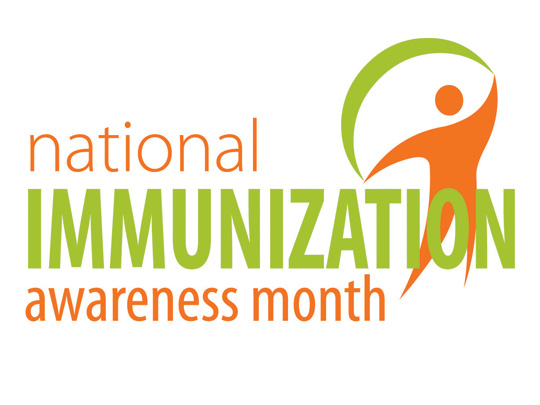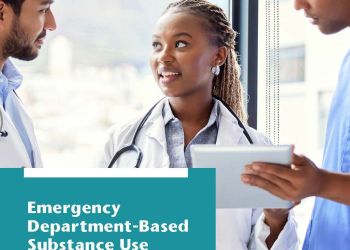
Every August, NACCHO participates in observing National Immunization Awareness Month (NIAM) to highlight the importance of immunizations throughout the lifespan, particularly among school-aged children, pregnant women, babies and infants, pre-teens and teens, and adults. Local health departments (LHDs) play a vital role in increasing awareness about immunizations as a tool to protect communities across the nation from the threat of vaccine-preventable diseases (VPDs). They act as administrators of vaccinations, partners in community advocacy groups and immunization coalitions, and as distributors of data surrounding VPDs.
As a mechanism to ensure that LHDs inform and are aware of developments and emerging issues in immunization, NACCHO convenes an Immunization Workgroup (IZWG) of subject matter experts. Consisting of local health officials, this workgroup meets monthly to provide a forum for discussing policy development, sharing relevant news updates, exchanging information and experiences, and developing tools for LHD immunization programs. The IZWG has three subcommittees focusing on the most salient issues regarding immunization in public health today: situational awareness of assets and barriers, impact of national healthcare, and consumer confidence & education. In this blog post, each of these subcommittees provides background into their chosen focus area and useful resources for LHDs to champion immunization best practices throughout the U.S.
Situational Awareness: Assets and Barriers
The “Situational Awareness: Assets and Barriers (SAAB) Subcommittee explores immunization resources, opportunities, and challenges in the field of public health. This group assists the IZWG in targeted tool development that addresses the needs of LHDs and immunization programs.
VPDs continue to pose a threat, even within the global umbrellas of immunization programs throughout the world. Ongoing outbreaks of mumps, measles, and hepatitis A in many parts of the U.S. provide evidence of this current threat. Ironically, the success of immunization in reducing morbidity and mortality can undermine the urgency for continuing vigilance to keep VPDs away from communities. Cognizant of this ongoing threat, the SAAB serves as a vehicle to hone in on potential barriers that may hinder sustained high immunization coverage rates and identify assets to increase immunization uptake throughout the lifespan among all populations. Additionally, recognizing the significance of recent VPD outbreaks among under and unimmunized populations, the subcommittee aims to share best practices and other resources to assist LHDs in providing immunization services to these populations.
The SAAB’s work involves creating and/or collating tools and evidence-informed strategies that LHDs can use to prevent VPDs, as well as identifying barriers that may impede immunization access and increased vaccination coverage rates for all populations. SAAB members review resources relating to the financial landscape of healthcare funding and their effects on access as a barrier. Members meet periodically to explore the potential impacts of either emerging or ongoing issues, such as parental concerns. One key lesson for SAAB members is the importance and value of partnerships developed through networking that can help address the myriad local and national-level issues of access and equity. SAAB hopes that the following resources are useful and timely for local needs as they arise:
General Guidance for Childhood, Adolescent, and Adult Immunizations
- Association of Immunization Managers (AIM) – Adolescent Immunization Resource Guide and Adult Immunization Resource Guide
- Association of State and Territorial Health Officials (ASTHO) – Immunization Resource Guide
- Community Prevention Services Task Force – Findings for Increasing Vaccination
- Immunization Action Coalition – Vaccinating Adults: A Step-by-Step Guide
- Immunity Community – Mobile Immunizations Toolkit
Messaging and Communications
- American Academy of Pediatrics – Immunization Social Media Toolkit
- NACCHO – Strategic Messaging Guide 2018
- Centers for Disease Control and Prevention (CDC) – Social Media Tools, Guidelines and Best Practices
- National Adult and Influenza Immunization Summit Partners – Quick Guide to Adult Vaccine Messaging
Addressing Health Equity and Immunizations for Specific Populations
- CDC – Vaccines and Immunization for Specific Groups of People
- ASTHO – Identifying and Vaccinating Uninsured Adults: Strategies and Practices
- Migrant Clinicians Network – Immunizations
- Immunization Action Coalition – Vaccine Information Statement – Language Index
- Immunity Community – Healthcare Worker Immunization Toolkit
Impact of National Healthcare

The National Healthcare Subcommittee (NHS) was convened to address the impact of national healthcare reform – particularly the Affordable Care Act (ACA) – on LHD immunization programs and on immunization as a key public health strategy, in general. The IZWG felt that “national healthcare” was an important area of consideration for immunizations both because: 1) greater access to healthcare in most states provided expanded opportunities for providing clinical preventive services such as immunizations, and 2) with expanded primary care, many LHDs were de-emphasizing their role in provision of these services. Our intent was to better understand how to leverage changes related to ACA for optimal immunization impact and how to maintain “safety net capacity” for LHDs both for outbreak response (e.g., pandemic influenza) and in jurisdictions with less robust expanded healthcare.
Six months after the launch of the NHS Subcommittee, the results of the 2016 election and subsequent discussions about repealing and replacing ACA somewhat changed the tenor of the focus. Over the past 18 months, the Subcommittee has placed greater emphasis on maintaining progress in immunization efforts and on helping LHD immunization programs become better equipped to monitor and influence policy related to their work. These discussions have culminated in the development of a set of policy resources to serve as a toolkit for LHD immunization programs during a time of continuing uncertainty in access to healthcare and funding of public health programs. It is the hope of the Subcommittee that these resources will not only be useful during NIAM, but as a living resource beyond that time.
Immunization and Health Policy:
- Adult Vaccine Access Coalition (AVAC) – Updates
- ASTHO – Immunization Legislation Tracking
- Infectious Diseases Society of America (IDSA) – Immunizations and Vaccines Policy
- Kaiser Family Foundation – Non-partisan source for the health policy community and the public
- NACCHO Government Affairs – Policy and Advocacy
- National Conference of State Legislators – Immunization Policy Issues
- 317 Coalition – Legislative Update
- Vaccine Facts and Policy – Immunization law and policy information
Consumer Confidence & Education
Vaccines are one of the safest and most effective ways to prevent serious and life-threatening diseases. However, vaccination coverage in the U.S. continues to remain low for several vaccines. Increasing vaccination rates is a priority for LHDs, and understanding barriers and challenges including the reduction in vaccine confidence is a major concern.
The IZWG convened the Consumer Education and Confidence Subcommittee (CECS) to assemble resources to assist LHDs as they work to increase vaccine confidence within their communities. Recognizing the important role that vaccine confidence plays in vaccination coverage and the health of communities, the CECS supports learning opportunities by bringing subject matter experts to discuss resources to address vaccine hesitancy. Additional resources vetted by the CECS include recent peer-reviewed research into various approaches for increasing confidence among hesitant parents and materials produced by trusted, professional

organizations. Considering the importance of provider recommendations on vaccine acceptance, the CECS also recommends resources to help healthcare professionals effectively communicate about vaccine hesitancy within their practice, along with vaccine safety and efficacy infographics that can be distributed to parents.
Consumer Confidence and Education:
- Johns Hopkins Bloomberg School of Public Health – Institute for Vaccine Safety
- European Centre for Disease Prevention and Control – Let’s talk about hesitancy
- Children’s Hospital of Philadelphia – Addressing Vaccine Hesitancy, a 20-page guide for addressing vaccine hesitancy
- iVaccinate – Provides information and tools on vaccination for parents.
- American Academy of Pediatrics – Infectious Disease Committee
- Shot of Prevention blog – Community blog discussing current events regarding immunizations
- CDC – Infographics for Infant and Childhood Immunization
Additional resources:
- CDC – Provider Resources for Vaccine Conversations with Parents
- American Academy of Family Physicians – Conversations: Improving Adult Immunization Rates Using Simple and Strong Recommendations
- Immunity Community (Vax Northwest) – Conversation Guide for Healthcare Professionals
During NIAM, members of NACCHO’s IZWG encourage LHD immunization programs to utilize and share these resources to educate themselves, their clients, and their partners on the importance of immunization. The IZWG hopes that NACCHO members find these resources useful as LHDs work to educate clients and communities about the importance of immunization and provide this vital service in their clinics. LHDs can take advantage of NIAM overall to raise awareness in their offices about why vaccines are important and how they prevent serious diseases. To learn more about NIAM and to access additional resources, see the National Public Health Information Coalition’s toolkit for immunization communication with a special focus on each target population featured during NIAM.
NACCHO and the Immunization Program wish to sincerely thank the following IZWG members for their contributions to this NIAM article, as well as their continued support, leadership and dedication to the field of public health and immunization: Carrie Harter, Shelia Hiddleson, Sean Dade, John Douglas, Alexandra Hayes, Paul Hunter, Alisa Johnson Athen, Jacob Mbafor, Libby Page, Marisa Stanley, Gillian Stoltman, and Tiffany Tate.


